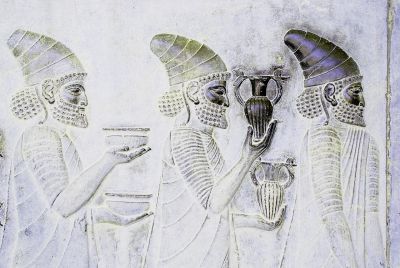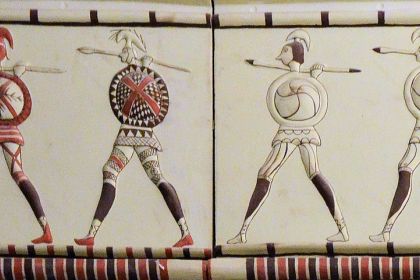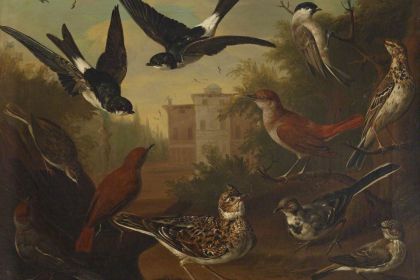Music Theory
Lydian mode: famous examples throughout the music history

Lydian delegation at Apadana
Musical Mode: Lydian Mode
Major and minor modes are the most used diatonic scales in classical and popular music due to their versatile structure which allows composers to combine all three harmonic functions, namely tonic, subdominant, and dominant. Different types of interaction of these functions elicit various emotional responses through creating tension and organically resolving it.
In addition to major and minor, there are many other scales in the music canon, such as Phrygian, Lydian, and Mixolydian which can be found in the music of different periods and are used by composers to evoke associations with a particular locale, historical period, or simply to create contrasts.
Widely used in antiquity and the Middle Ages, the Lydian mode was named after Lydia—the historical region adjacent to Ancient Greece from which it probably originated. Although there is some historical confusion over which particular musical scale was called Lydian at different times and in different countries, at present the Lydian mode or Lydian major referred to as the seven-tone diatonic scale which completely repeats the natural major with the exception of the fourth scale degree raised on a semitone.
C Lydian scale:

Since the fourth scale degree of diatonic scales represents the subdominant function, its alteration deprives the Lydian scale of universality, imbuing it with a mostly dominant character. Musical theorists of different eras such as Guido of Arezzo and Adam von Fulda characterize the Lydian mode as bright, happy, and super-major, which clarifies its usage in various hymns and anthems.

Since the fourth scale degree of diatonic scales represents the subdominant function, its alteration deprives the Lydian scale of universality, imbuing it with a mostly dominant character. Musical theorists of different eras such as Guido of Arezzo and Adam von Fulda characterize the Lydian mode as bright, happy, and super-major, which clarifies its usage in various hymns and anthems.
Listen to the guitar version of the thirteen-century Hymn to St. Magnus written in F Lydian:
Naturally, the optimistic and solemn atmosphere created by the music written in the Lydian mode was in demand in church genres during the Middle Ages and Renaissance.
Listen to the Renaissance era motet Nato nobis Salvatore performed by Early Music New York in F# Lydian:
By the middle of the Baroque period, the major and minor scales, supported by the emerging tonal theories, almost completely replaced the Phrygian, Lydian and other so-called modal scales from Western classical music. A similar situation occurred during the Classical period, so it might be difficult to single out any work that was written entirely in the Lydian scale. However, it occasionally occurs in the music of that time, for example in Mozart's Galimathias musicum in D major.
Perhaps the first composer of the Romantic period to use the Lydian scale was Beethoven who wrote the third movement of his String quartet No. 15 in this mode. Written in 1825, this movement was the composer's way of celebrating his recovery from a serious intestinal disorder that had plagued him for several months causing fears of death. Being unusually soft and life-affirming, the work carries the inscription "Holy Song of Thanksgiving of a Convalescent to the Deity, in the Lydian Mode".
Listen to the third movement of Ludwig van Beethoven's String Quartet No. 15 in A minor performed by Guarneri Quartet:
Following Beethoven, who is believed to have opened the doors of Romanticism, modal scales began to appear in the works of many composers including Chopin, Mussorgsky, and Grieg. It seems that the most intriguing piece in Lydian mode for piano was written by the French composer Charles-Valentin Alkan in Allegro Barbaro which is part of his 12 Etudes in All the Minor Keys.
Listen to F Lydian Allegro Barbaro by Charles-Valentin Alkan performed by Jack Gibbons:
The composers' attention to modal scales progressed overtime as revolutionary directions in the art, such as impressionism and modernism, established new standards requiring new compositional methods to be capable of creating advanced forms and aesthetics in music.
In the 20th century, the Lydian mode can be found in the works of many famous composers such as Claude Debussy, Sergei Prokofiev, Béla Bartók, and Carlos Chávez.



